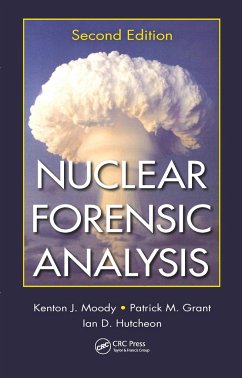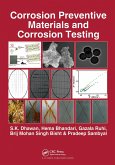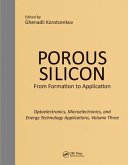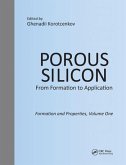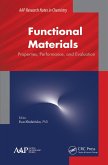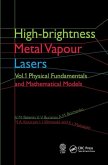- Broschiertes Buch
- Merkliste
- Auf die Merkliste
- Bewerten Bewerten
- Teilen
- Produkt teilen
- Produkterinnerung
- Produkterinnerung
Now in its second edition, this book provides a multidisciplinary reference for forensic scientists, analytical and nuclear chemists, and nuclear physicists. The authors focus particularly on the chemical, physical, and nuclear aspects associated with the production or interrogation of a radioactive sample. They consolidate fundamental principle
Andere Kunden interessierten sich auch für
![The Misuse of Drugs Act The Misuse of Drugs Act]() Leslie A KingThe Misuse of Drugs Act43,99 €
Leslie A KingThe Misuse of Drugs Act43,99 €![Recycling and Reuse of Materials and Their Products Recycling and Reuse of Materials and Their Products]() Recycling and Reuse of Materials and Their Products104,99 €
Recycling and Reuse of Materials and Their Products104,99 €![Corrosion Preventive Materials and Corrosion Testing Corrosion Preventive Materials and Corrosion Testing]() S K DhawanCorrosion Preventive Materials and Corrosion Testing102,99 €
S K DhawanCorrosion Preventive Materials and Corrosion Testing102,99 €![Porous Silicon: From Formation to Applications: Optoelectronics, Microelectronics, and Energy Technology Applications, Volume Three Porous Silicon: From Formation to Applications: Optoelectronics, Microelectronics, and Energy Technology Applications, Volume Three]() Porous Silicon: From Formation to Applications: Optoelectronics, Microelectronics, and Energy Technology Applications, Volume Three64,99 €
Porous Silicon: From Formation to Applications: Optoelectronics, Microelectronics, and Energy Technology Applications, Volume Three64,99 €![Porous Silicon: From Formation to Application: Formation and Properties, Volume One Porous Silicon: From Formation to Application: Formation and Properties, Volume One]() Porous Silicon: From Formation to Application: Formation and Properties, Volume One64,99 €
Porous Silicon: From Formation to Application: Formation and Properties, Volume One64,99 €![Functional Materials Functional Materials]() Functional Materials104,99 €
Functional Materials104,99 €![High-Brightness Metal Vapour Lasers High-Brightness Metal Vapour Lasers]() V M BateninHigh-Brightness Metal Vapour Lasers64,99 €
V M BateninHigh-Brightness Metal Vapour Lasers64,99 €-
-
-
Now in its second edition, this book provides a multidisciplinary reference for forensic scientists, analytical and nuclear chemists, and nuclear physicists. The authors focus particularly on the chemical, physical, and nuclear aspects associated with the production or interrogation of a radioactive sample. They consolidate fundamental principle
Produktdetails
- Produktdetails
- Verlag: Taylor & Francis Ltd (Sales)
- 2nd edition
- Seitenzahl: 524
- Erscheinungstermin: 31. März 2021
- Englisch
- Abmessung: 234mm x 156mm x 27mm
- Gewicht: 730g
- ISBN-13: 9780367778040
- ISBN-10: 0367778041
- Artikelnr.: 61209942
- Verlag: Taylor & Francis Ltd (Sales)
- 2nd edition
- Seitenzahl: 524
- Erscheinungstermin: 31. März 2021
- Englisch
- Abmessung: 234mm x 156mm x 27mm
- Gewicht: 730g
- ISBN-13: 9780367778040
- ISBN-10: 0367778041
- Artikelnr.: 61209942
Kenton J. Moody is with the Nuclear Chemistry Division at Lawrence Livermore National Laboratory (LLNL), where he is a technical leader for the application of nuclear and radiochemical techniques to problems in national security and the U.S. nuclear stockpile. He also performs basic research on the heaviest elements. In addition to numerous classified reports detailing the performance of nuclear explosive devices, he has coauthored more than 100 refereed journal publications in the subject areas of the decay properties of the heaviest elements, nuclear reaction mechanisms, fission, and nuclear structure. He has co-discovered six chemical elements and more than four dozen heavy-element isotopes. Patrick M. Grant has been a staff member at Livermore National Laboratory since 1983, serving as the deputy director and special operations and samples manager of the Forensic Science Center. In addition to numerous classified and law enforcement reports, he has authored or coauthored more than 120 refereed publications in the open literature in diverse subject areas. He has been a fellow of the American Academy of Forensic Sciences since 1999 and a member of the editorial board of the Journal of Forensic Sciences since 2003. One of his unclassified investigations, a scientific explanation for the Riverside Hospital Emergency Room "Mystery Fumes" incident, was extensively highlighted in the popular media and is now appearing in fundamental forensic science textbooks. Ian D. Hutcheon is the deputy director of the Glenn Seaborg Institute, the Chemical and Isotopic Signatures group leader in the Nuclear and Chemical Sciences Division, and a Distinguished Member of the Technical Staff at Lawrence Livermore National Laboratory. He has authored over 180 publications in peer-reviewed journals in the areas of secondary-ion mass spectrometry, the early history of the solar system, and nuclear forensic analysis. He also serves on the review panels of the NASA Cosmochemistry Program and the Sample Return Laboratory Instruments and Data Analysis Program. He is a member of the American Geophysical Union and a fellow of the Meteoritical Society.
Introduction. Physical Basis of Nuclear Forensic Science. Engineering
Issues. Chemistry and Nuclear Forensic Science. Principles of Nuclear
Explosive Devices and Debris Analysis. Chronometry. Techniques for Small
Signatures. Collateral Forensic Indicators. Sample Matrices and Collection.
Radiochemical Procedures. Inorganic/Isotopic Sample Preparation. Organic
Sample Preparation. Extraordinary Sample Issues. Field Collection Kits. NDA
Field Radioactivity Detection. Laboratory Analyses. Inferred Production
Estimates. Materials Profiling. Source and Route Attribution. Forensic
Investigation of a Highly Enriched Uranium Sample Interdicted in Bulgaria.
Counterforensic Investigation of US Enrichment Plants. Nuclear Smuggling
Hoax: D- Counterweight. Nuclear Smuggling Hoax: Sc Metal. Fatal "Cold
Fusion" Explosion. Questioned Sample from the US Drug Enforcement Agency.
Radioactive Pillow Shipment. Afghanistan Scam Specimens. Index.
Issues. Chemistry and Nuclear Forensic Science. Principles of Nuclear
Explosive Devices and Debris Analysis. Chronometry. Techniques for Small
Signatures. Collateral Forensic Indicators. Sample Matrices and Collection.
Radiochemical Procedures. Inorganic/Isotopic Sample Preparation. Organic
Sample Preparation. Extraordinary Sample Issues. Field Collection Kits. NDA
Field Radioactivity Detection. Laboratory Analyses. Inferred Production
Estimates. Materials Profiling. Source and Route Attribution. Forensic
Investigation of a Highly Enriched Uranium Sample Interdicted in Bulgaria.
Counterforensic Investigation of US Enrichment Plants. Nuclear Smuggling
Hoax: D- Counterweight. Nuclear Smuggling Hoax: Sc Metal. Fatal "Cold
Fusion" Explosion. Questioned Sample from the US Drug Enforcement Agency.
Radioactive Pillow Shipment. Afghanistan Scam Specimens. Index.
Introduction. Physical Basis of Nuclear Forensic Science. Engineering
Issues. Chemistry and Nuclear Forensic Science. Principles of Nuclear
Explosive Devices and Debris Analysis. Chronometry. Techniques for Small
Signatures. Collateral Forensic Indicators. Sample Matrices and Collection.
Radiochemical Procedures. Inorganic/Isotopic Sample Preparation. Organic
Sample Preparation. Extraordinary Sample Issues. Field Collection Kits. NDA
Field Radioactivity Detection. Laboratory Analyses. Inferred Production
Estimates. Materials Profiling. Source and Route Attribution. Forensic
Investigation of a Highly Enriched Uranium Sample Interdicted in Bulgaria.
Counterforensic Investigation of US Enrichment Plants. Nuclear Smuggling
Hoax: D- Counterweight. Nuclear Smuggling Hoax: Sc Metal. Fatal "Cold
Fusion" Explosion. Questioned Sample from the US Drug Enforcement Agency.
Radioactive Pillow Shipment. Afghanistan Scam Specimens. Index.
Issues. Chemistry and Nuclear Forensic Science. Principles of Nuclear
Explosive Devices and Debris Analysis. Chronometry. Techniques for Small
Signatures. Collateral Forensic Indicators. Sample Matrices and Collection.
Radiochemical Procedures. Inorganic/Isotopic Sample Preparation. Organic
Sample Preparation. Extraordinary Sample Issues. Field Collection Kits. NDA
Field Radioactivity Detection. Laboratory Analyses. Inferred Production
Estimates. Materials Profiling. Source and Route Attribution. Forensic
Investigation of a Highly Enriched Uranium Sample Interdicted in Bulgaria.
Counterforensic Investigation of US Enrichment Plants. Nuclear Smuggling
Hoax: D- Counterweight. Nuclear Smuggling Hoax: Sc Metal. Fatal "Cold
Fusion" Explosion. Questioned Sample from the US Drug Enforcement Agency.
Radioactive Pillow Shipment. Afghanistan Scam Specimens. Index.

